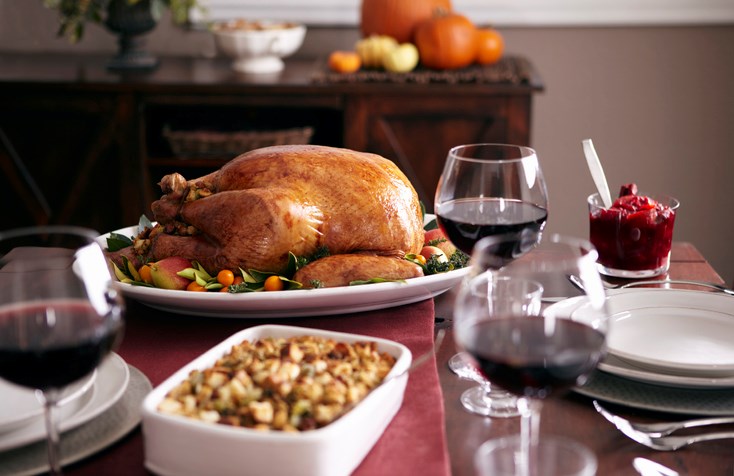Thanksgiving is this weekend. With the price of food these days, we’re all wondering how most of us will cope.
In partnership with Angus Reid, Dalhousie University’s Agri-Food Analytics Lab investigated what Canadian consumers plan to do with their menu over the weekend. In total, 1,503 Canadians were consulted on September 30, 2022, for this cross-national survey.
Based on results, while traditions are holding strong and appear to be incredibly important to many Canadians, we can also tell some families are adjusting due to sticker shocks at the grocery store.
Many families will eat a variety of meats for Thanksgiving, such as ham, beef, chicken, and other animal protein sources. But our lab only looked at mainstays and assessed how popular they still are in Canada. And those products have gone up significantly in price in just the last 12 months.
Our estimates suggest that turkey, a traditional dish for Thanksgiving dinners in Canada, has increased in per-kilogram price by an average of 15 to 16 per cent compared to last year.
Potatoes are 22 per cent more expensive compared to last year. While frozen corn is up six per cent from last year, the price of bread, in general, has increased by 13 per cent compared to last year.
The cost of bacon and ham, popular in some homes, is up about 10 per cent compared to 2021. Chicken has increased by about 10 per cent, and cranberries are 12 per cent more expensive. In dairy, butter has increased significantly, up 13 per cent compared to last year.
These are obviously only estimates as some prices will vary based on location, size of packages, and point of purchase.
Nearly half (45 per cent) of Quebecers say they do not celebrate Thanksgiving, whereas roughly nine-in-10 in every other region of the country do. That is a notable difference. Among those who celebrate Thanksgiving, more than two-thirds (68 per cent) say they will be eating the same meal/foods they normally do.
Saskatchewan and Manitoba have the highest percentage of this group at 70 per cent. Almost a quarter (22 per cent) say they will be making some changes because of higher food prices.
This is especially likely in British Columbia (29 per cent) and Alberta (25 per cent). Lower-income households, which earn below $50,000 a year and comprise 30 per cent of this group, are almost certainly making changes due to higher food prices.
About 10 per cent of Canadians plan to make some changes just because they want to try something new.
Turkey is widely considered essential for Thanksgiving dinner, with three-in-five (62 per cent) ranking it as the number one most important food, and three-in-four (77 per cent) ranking it among the top three. Stuffing and potatoes come in at a distant second and third, respectively, with a little less than half ranking each among their essential Thanksgiving foods.
Still, results indicate that many households enjoy other Thanksgiving foods, even if turkey remains a dominant choice. The survey did not include other types of meats.
Pumpkin pie remains the most favourite dessert for Thanksgiving (seven per cent). Interestingly, younger Canadians (18 to 34) are nearly twice as likely as those 35 and over to rank pumpkin pie among their top three Thanksgiving foods (38 per cent vs. 22 per cent, respectively).
Regionally, apple crisp appears to be much more popular in Quebec than in the rest of Canada.
Eating homemade food and local food products are also popular at Thanksgiving. While 82 per cent of Canadians prefer to eat homemade food for Thanksgiving, 51 per cent prefer to eat local foods.
In Saskatchewan, Manitoba, British Columbia, and the Atlantic provinces, support for homemade food is over 80 per cent. For eating local, both British Columbia (54 per cent) and the Atlantic region (56 per cent) scored very well. Nice numbers for our cooking spirits and our local food movement.
We shouldn’t forget, however, that Thanksgiving is about family, friends, and food. We should be thankful for the bounty of our land and sea.
Despite higher food prices, let’s not forget that Canada remains an enviable place compared to other countries. Our food industry, from farm gate to retail, works hard to provide us with safe, high-quality foods.
Still, many are falling behind and are struggling. Let’s not forget about them. Do support your local food bank or food rescuing agencies if you can.
Happy Thanksgiving.
Dr. Sylvain Charlebois is senior director of the agri-food analytics lab and a professor in food distribution and policy at Dalhousie University.
© Troy Media





